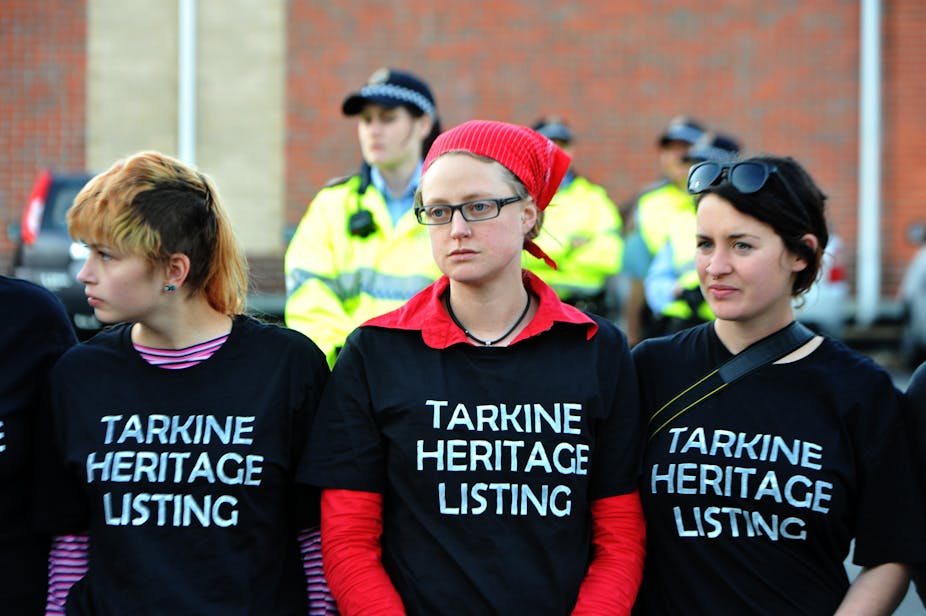Now that all Senate seats apart from Western Australia have been finalised, it’s clear the Greens have had a mixed result. But the worst of the bad news for the party is likely yet to come, when Tasmania goes to the polls next year.
Federal results: win some, lose some
While the Greens look likely to have lost their West Australian Senator Scott Ludlum, their candidate Janet Rice has picked up an extra Senate seat in Victoria. So the total of nine Green Senators is unchanged. But the Greens will lose the balance of power after July next year when the new Senate convenes because seven independents have been elected.
This will leave the Greens unable to thwart environmental policy rollbacks such as the repeal of Labor’s carbon pricing package. For leader, Senator Christine Milne, the election results are therefore bitter sweet. The Greens have maintained their numbers but lost influence in the Senate, and despite their successes their vote has actually imploded in the both houses.
There was a 3.3% nationwide swing against the party, whose support has trended downwards (from 11.76% in 2010 to 8.4% in 2013) for the first time since 1996, with the party clearly punished for its association with both the Labor government and its carbon tax.
Green vote implodes in Tasmania
Nowhere was the implosion of the Green vote more significant than in Tasmania. This bodes ill for the prospects of the Australian Greens who have been greatly influenced by green political developments in Tasmania.
The Tasmanian Greens are hugely experienced. They have supported three minority governments (Labor and Liberal) and currently two Greens sit as Labor Ministers in a quasi-coalition arrangement.
Both Christine Milne and Bob Brown have led the Tasmanian Greens into supporting minority state government. Brown was leader when the Greens supported the Labor minority government (1989-91) and Milne was when they supported the conservative Liberal minority government (1996-98). Both sought tangible environmental benefits, and both walked away from minority government when these were no longer assured.
In both cases the Greens vote declined at the next state election, in 1992, from 17.1% to 13.2% without the loss of any seats, and in 1998, only marginally, from 11.1% to 10.2%. But the Greens lost three of their four seats in 1998 after a change in the electoral quota from 12.5% to 17.6%, which was intended by the major parties to get the Greens out of the house.
Despite these setbacks, the Tasmanian Green state vote has grown steadily from 5.4% in 1982 to 21.6% in 2010. It is now set for a sharp downturn in 2014, as voters flee both the Labor minority government and its supporters for the conservatives, much as happened at the federal level. The Greens 2013 national result in Tasmania is telling, with a drop from its 2010 result of 16.82% to a primary vote of just 8.32% in 2013.
What will happen to the environment?
Conservative governments have been dismantling environmental policy around the country, with the incoming national government aiming to repeal carbon pricing as its first order of business. And so it will be in Tasmania, where the Green vote will decline from 21.6% to around 14% in 2014, with the possible loss of seats. A conservative Liberal majority government will be elected, and environmental policies will be reversed.
Despite the success of Tasmania’s transition to a new economy defined by its natural and cultural heritage and its clean, green branding, the Tasmanian Liberals have promised to support the old industries. They plan to log World Heritage forests and oppose the remarkable Tasmanian Forest Agreement between forest stakeholders, which was set to achieve reduced forest conflict and to move the forest industry onto a sustainable environmental and economic footing.
The Liberals will encourage mining ventures in the Tarkine, the largest Gondwanan cool temperate rainforest in Australia and possibly in the southern hemisphere, and a refuge for the endangered Tasmanian Devil. They have talked about revoking the name “Tarkine”. They plan to undo environmental regulations, cut “green tape”, reduce third party planning appeals, not “lock up” any mining regions or forests, and axe the Tasmanian Climate Action Council.
The Liberals will have the support of the national government led by arch-conservative Tony Abbott, and, in opposing the environmental policy reversals across the country, the Greens may well find that support for their beleaguered state and national parties rallies again.
In this the Tasmanian and Australian Greens will certainly find common cause and, with a clear distance now established from unpopular Labor governments, they will remind voters of the reasons why their parties were founded in the first place

